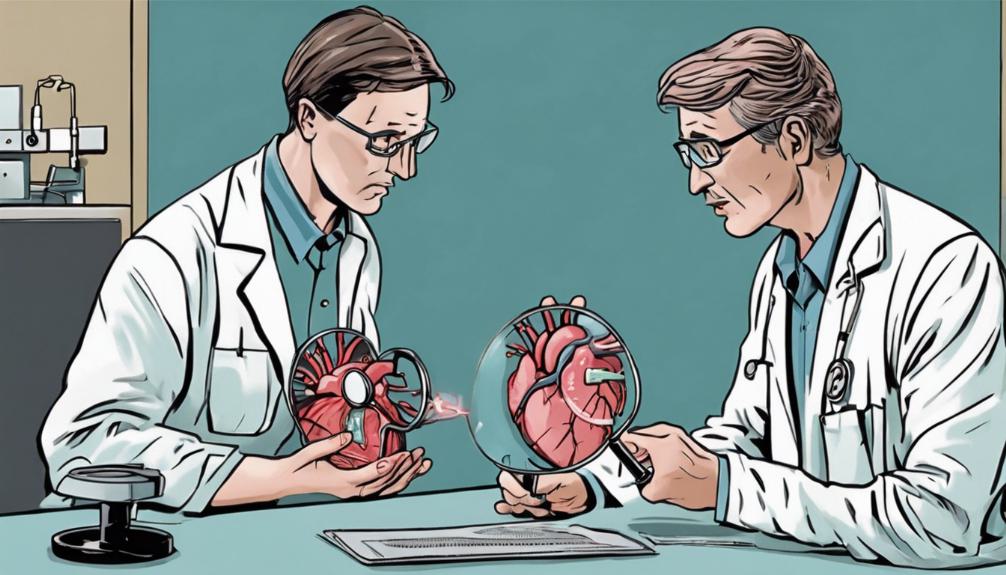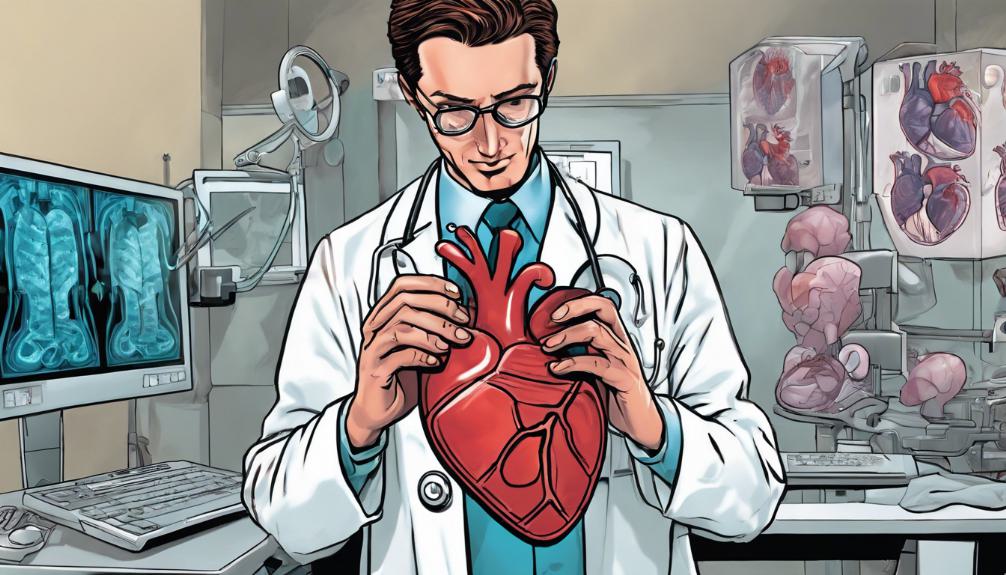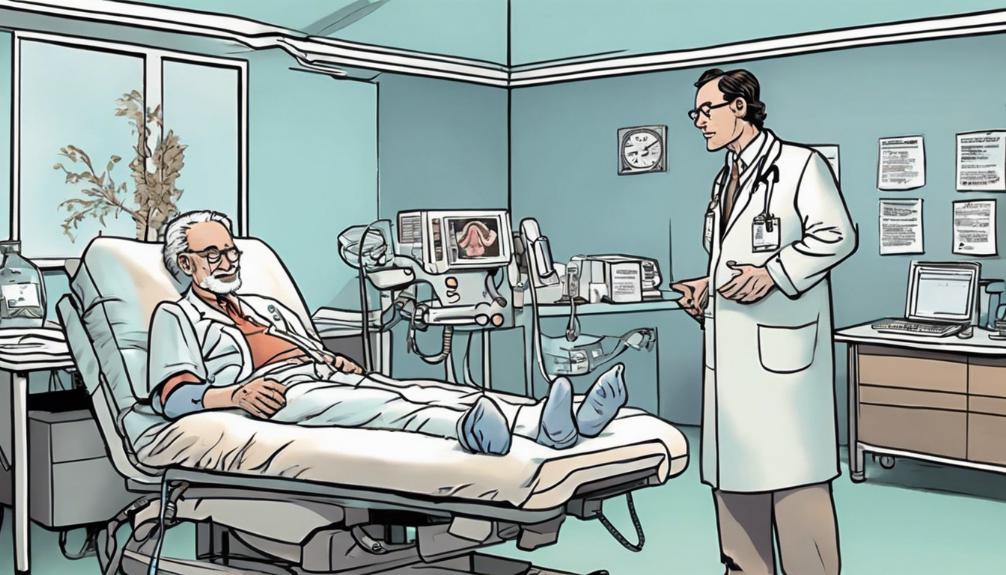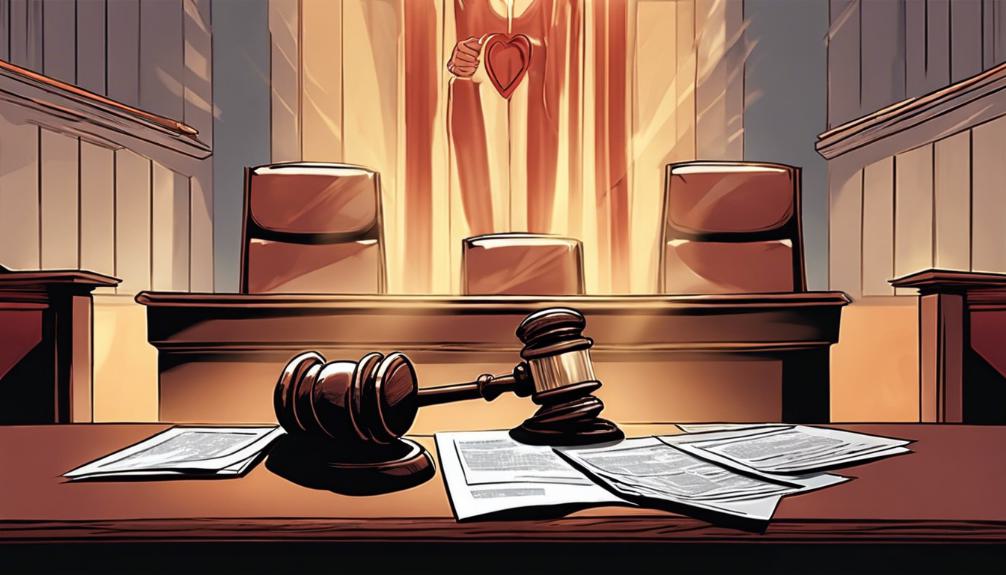Pericardial Mesothelioma Lawsuit: Have You or A Loved One Suffered From Pericardial Mesothelioma?
Pericardial mesothelioma, though a rare malignancy, casts a long shadow over the lives of those affected by it, primarily due to its association with asbestos exposure. This form of cancer, targeting the heart's lining, not only precipitates a range of severe symptoms but also opens a complex legal battleground for victims and their families. The intricacies of pursuing a lawsuit in such cases—ranging from establishing the link between asbestos exposure and the disease, to navigating the available legal pathways for compensation—demand a thorough understanding and strategic approach. For individuals contemplating the pursuit of justice and compensation, the initial steps involve recognizing the importance of expert legal guidance. This conversation aims to illuminate these critical considerations, offering a starting point for those facing the daunting journey ahead.

Understanding Pericardial Mesothelioma
Pericardial mesothelioma, a rare and aggressive malignancy, arises from the pericardium, the protective lining surrounding the heart. This form of cancer is notably challenging to diagnose due to its non-specific symptoms, which can mimic those of other heart conditions. Symptoms may include chest pain, heart palpitations, difficulty breathing, and fluid accumulation in the pericardial space, leading to complications such as constrictive pericarditis. Diagnosis involves a combination of medical history review, physical examinations, imaging tests such as CT scans or MRIs, and biopsies to confirm the presence of cancerous cells. Given its aggressive nature, early detection is crucial for managing the disease, although treatment options are limited and primarily focus on alleviating symptoms and improving quality of life.
Asbestos Exposure Risks

Asbestos exposure, a primary risk factor for pericardial mesothelioma, occurs when individuals inhale or ingest asbestos fibers, leading to severe health complications. Historically used in construction, manufacturing, and military applications due to its fire-resistant properties, asbestos becomes hazardous when its fibers become airborne, often during demolition or renovation activities. Occupational exposure is most common among construction workers, electricians, plumbers, and veterans, but secondary exposure can also affect family members through contaminated clothing. Regulations have reduced the use of asbestos, yet many older buildings still contain these materials, posing ongoing risks. Identifying and mitigating asbestos exposure is critical, as even brief encounters with asbestos fibers can lead to pericardial mesothelioma years after the initial exposure.
Symptoms to Watch For

Understanding the risks associated with asbestos exposure is crucial, and equally important is recognizing the early warning signs of potential health issues, such as those indicative of pericardial mesothelioma. Individuals exposed to asbestos should be vigilant for symptoms that could signal the onset of this rare but serious condition. Key symptoms to watch for include chest pain, often described as persistent and constricting, heart palpitations, and difficulty breathing. Additional signs may encompass fluid accumulation in the pericardial space, leading to increased pressure on the heart, fever, fatigue, and night sweats. These symptoms, resulting from the inflammation of the heart's lining due to asbestos fiber irritation, necessitate immediate medical attention to manage the condition effectively and prevent further complications.
Diagnosis Methods

Diagnosing pericardial mesothelioma involves a multi-faceted approach, incorporating medical history assessment, thorough physical examinations, advanced imaging tests, and biopsies to confirm the presence of cancerous cells. Medical history focuses on asbestos exposure, a key factor in the development of mesothelioma. Physical examinations may reveal symptoms like fluid accumulation around the heart. Imaging tests, including CT scans and MRIs, offer detailed views of the pericardial area, identifying abnormalities and the extent of disease spread. Biopsies, involving tissue sample extraction from the pericardium, are crucial for definitive diagnosis, allowing pathologists to identify mesothelioma cells under a microscope. This comprehensive diagnostic process is essential for accurately identifying pericardial mesothelioma, facilitating appropriate legal and medical actions.
Treatment Options

Following a confirmed diagnosis of pericardial mesothelioma, identifying effective treatment options becomes the subsequent critical step for patients and healthcare providers. Due to the rarity and aggressive nature of this cancer, treatment strategies are tailored to the individual's health status and the disease's progression. Options may include surgery to remove the tumor or the affected portion of the pericardium, a procedure known as pericardial stripping. Chemotherapy may be administered to target cancer cells systemically. Additionally, palliative treatments focus on relieving symptoms and improving quality of life. Multimodal approaches combining these treatments are often considered to enhance outcomes. Close collaboration among a multidisciplinary team of specialists is essential in devising and implementing an effective treatment plan tailored to the patient's specific condition.
Legal Channels for Compensation

Victims of pericardial mesothelioma may pursue financial compensation through various legal avenues following exposure to asbestos. These legal channels include filing a personal injury lawsuit against manufacturers of asbestos-containing products or employers who failed to provide adequate protection against asbestos exposure. In addition to personal injury claims, victims or their families may also explore the option of wrongful death lawsuits in the event that the disease leads to the victim's demise. Furthermore, specific trust funds have been established by bankrupt asbestos companies to compensate victims. Eligibility for compensation through these trusts requires proof of diagnosis and exposure. It is critical for victims to seek legal consultation to navigate these options effectively, ensuring they receive the rightful compensation for their suffering and financial losses.
Notable Lawsuits and Settlements

Several high-profile pericardial mesothelioma lawsuits have resulted in significant settlements for those affected by asbestos exposure. These legal actions typically involve individuals who were unknowingly exposed to asbestos dust or fibers, leading to a diagnosis of pericardial mesothelioma—a rare cancer affecting the heart's lining. The compensation awarded in these cases aims to cover medical expenses, lost wages, and pain and suffering. Such lawsuits underscore the responsibility of companies to ensure the safety of their products and work environments. While the specifics of settlements remain confidential in many instances, the legal victories have set important precedents, providing hope and financial relief to victims and their families. These cases also highlight the critical importance of seeking legal recourse for those diagnosed with asbestos-related diseases.
Drug Injury Legal Actions

In recent years, a surge in lawsuits related to drug injuries has highlighted the potential dangers associated with certain medications. Patients and healthcare providers have been alarmed by severe adverse effects, prompting legal actions against pharmaceutical companies. These lawsuits often focus on allegations that the companies failed to adequately warn about the risks or deliberately concealed harmful side effects to boost sales. Drugs like Prilosec, Nexium, Tylenol, and newer medications such as Elmiron, Suboxone, and Ozempic have been at the center of these controversies. Victims seek compensation for medical expenses, lost wages, and suffering caused by these adverse effects. The legal landscape is continually evolving as more information about drug-induced injuries comes to light, underscoring the importance of vigilance and accountability in the pharmaceutical industry.
Medical Device Litigation

Amid growing concerns over patient safety, lawsuits concerning medical devices, such as transvaginal mesh and hip replacements, have become increasingly prevalent in courts worldwide. These legal actions often highlight the potential risks and complications associated with the use of certain medical devices, leading to significant patient harm. Manufacturers like Ethicon and Boston Scientific have faced numerous lawsuits over the alleged failure of their products to perform as safely as advertised, resulting in complications ranging from infection to device failure. Breast implant cancer lawsuits and recall actions against products like Philips CPAP machines further underscore the critical need for stringent regulatory oversight and accountability in the medical device industry. As these cases continue to surface, they signal a growing demand for transparency and safety in medical device manufacturing and usage.
Case Review Process

The case review process begins with a thorough evaluation of the claimant's medical history, exposure to risk factors, and the legal merits of the case. This meticulous approach ensures that every aspect of the individual's situation is considered, from the initial asbestos exposure to the diagnosis of pericardial mesothelioma and its impact on their health and well-being. Lawyers specializing in mesothelioma cases carefully analyze medical records, employment history, and any potential asbestos contamination sources to construct a compelling case for compensation. Additionally, expert testimonies and scientific evidence are gathered to substantiate the claim, highlighting the direct link between asbestos exposure and the development of pericardial mesothelioma. This comprehensive review is crucial for determining the viability of the lawsuit and strategizing the best approach for pursuing justice and compensation for the affected individuals.
Seeking Legal Consultation

Understanding the complexity and challenges of pericardial mesothelioma cases, seeking legal consultation with an experienced injury lawyer becomes a crucial step for individuals aiming to pursue compensation. The intricacies of establishing a connection between asbestos exposure and the development of pericardial mesothelioma necessitate a lawyer well-versed in this highly specialized area of law. An effective legal consultation provides a comprehensive case evaluation, determining the viability of a claim based on medical diagnoses, exposure history, and applicable laws. It also guides through the legal process, ensuring that all procedural requirements are met within statutory deadlines. This critical legal support empowers affected individuals and their families, providing them with the necessary legal framework to navigate their claims successfully.
Compensation Possibilities

For individuals diagnosed with pericardial mesothelioma, exploring compensation possibilities is a critical step in addressing the financial and emotional toll of the disease. Legal avenues provide a pathway to potentially significant financial relief, which can cover medical expenses, loss of income, and pain and suffering. Given the disease's association with asbestos exposure, compensation may also include punitive damages against responsible parties. It's essential to understand that compensation can vary widely based on individual case specifics, including the extent of exposure, the severity of the condition, and applicable state laws. Engaging with a knowledgeable attorney experienced in mesothelioma cases can help navigate these complexities, ensuring that victims and their families receive the fullest compensation possible under the law.
Pursuing Justice

Victims of pericardial mesothelioma often find that pursuing justice through legal action not only seeks reparation but also raises awareness about the dangers of asbestos exposure. Legal battles can highlight the negligence of companies that failed to protect their employees from harmful asbestos fibers, thus preventing future cases. By filing a lawsuit, affected individuals and families can seek compensation for medical expenses, lost wages, and pain and suffering. This process, while challenging, empowers victims to hold responsible parties accountable. Legal professionals specializing in asbestos-related cases possess the expertise to navigate these complex legal waters, ensuring that victims' rights are upheld. Pursuing justice serves a dual purpose: securing financial support for victims and spotlighting the critical need for stricter asbestos regulations.
Frequently Asked Questions
How Do I Differentiate Between Symptoms of Pericardial Mesothelioma and Other Heart-Related Conditions?
Differentiating between symptoms of pericardial mesothelioma and other heart-related conditions requires careful medical evaluation. Key symptoms of pericardial mesothelioma include chest pain, heart palpitations, and difficulty breathing, which can overlap with other cardiac issues. Advanced diagnostic methods such as medical history review, physical exams, imaging tests, and biopsies are essential. Additionally, the presence of asbestos exposure history is a critical factor distinguishing pericardial mesothelioma from other heart conditions.
Can Lifestyle Changes or Alternative Therapies Complement the Treatment of Pericardial Mesothelioma?
Lifestyle changes and alternative therapies can indeed complement the traditional treatment of pericardial mesothelioma, aiming to enhance the patient's quality of life and potentially improve outcomes. Such integrative approaches may include dietary modifications, physical activity tailored to the patient's condition, stress management techniques, and complementary therapies like acupuncture or massage. However, it's critical to consult healthcare professionals before integrating these practices to ensure they align with the conventional treatment plan and do not interfere with medical treatments.
How Does Pericardial Mesothelioma Affect Life Expectancy, and What Factors Influence This Prognosis?
Pericardial mesothelioma significantly impacts life expectancy, with prognosis varying based on several factors. Early detection and treatment methods can influence outcomes positively, although the rare nature of this condition often leads to later diagnosis. Factors affecting prognosis include the patient's overall health, age, and the cancer's stage at diagnosis. Advanced medical interventions and individual health profiles play critical roles in determining the survival rate of affected individuals.
What Are the Emotional and Psychological Support Options Available for Patients and Families Dealing With Pericardial Mesothelioma?
Patients and families navigating the challenges of pericardial mesothelioma can access a range of emotional and psychological support options. These include counseling services, support groups specifically geared towards mesothelioma patients, and resources through cancer support organizations. Additionally, many hospitals and treatment centers offer patient and family support services, including psychological counseling and social work assistance. Engaging with these resources can be vital in managing the emotional toll of the diagnosis and treatment process.
Are There Any Advancements in Research or Clinical Trials for Pericardial Mesothelioma That Offer Hope for Better Treatments or a Cure in the Near Future?
Advancements in pericardial mesothelioma research and clinical trials continue to offer hope for more effective treatments and potential cures. Innovative therapies, including immunotherapy and gene therapy, show promise in improving patient outcomes. Clinical trials are exploring novel drug combinations and treatment modalities. These developments represent significant strides toward better management of pericardial mesothelioma, aiming to extend survival rates and enhance the quality of life for affected individuals.

This post has been generated by AI and was not reviewed by editors. This is Not legal advice. Please consult with an attorney.




